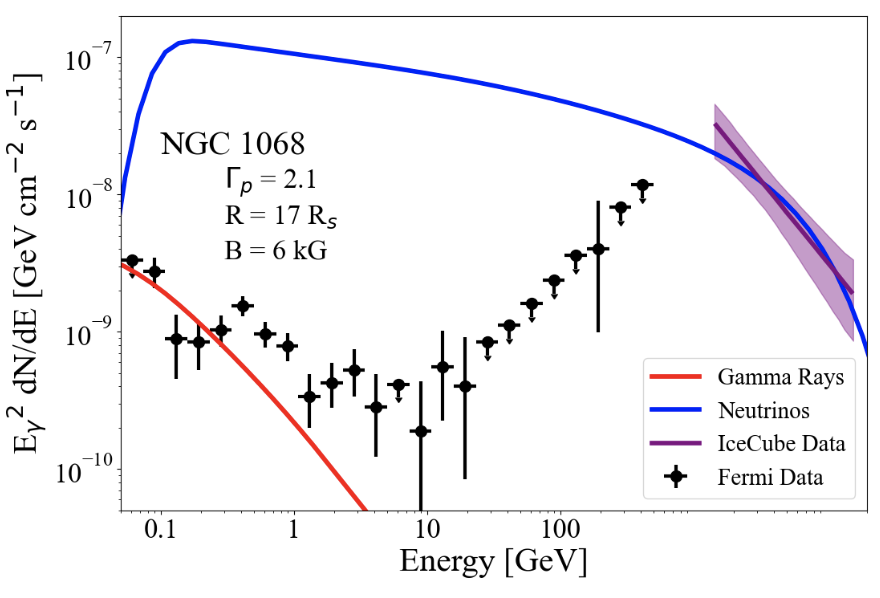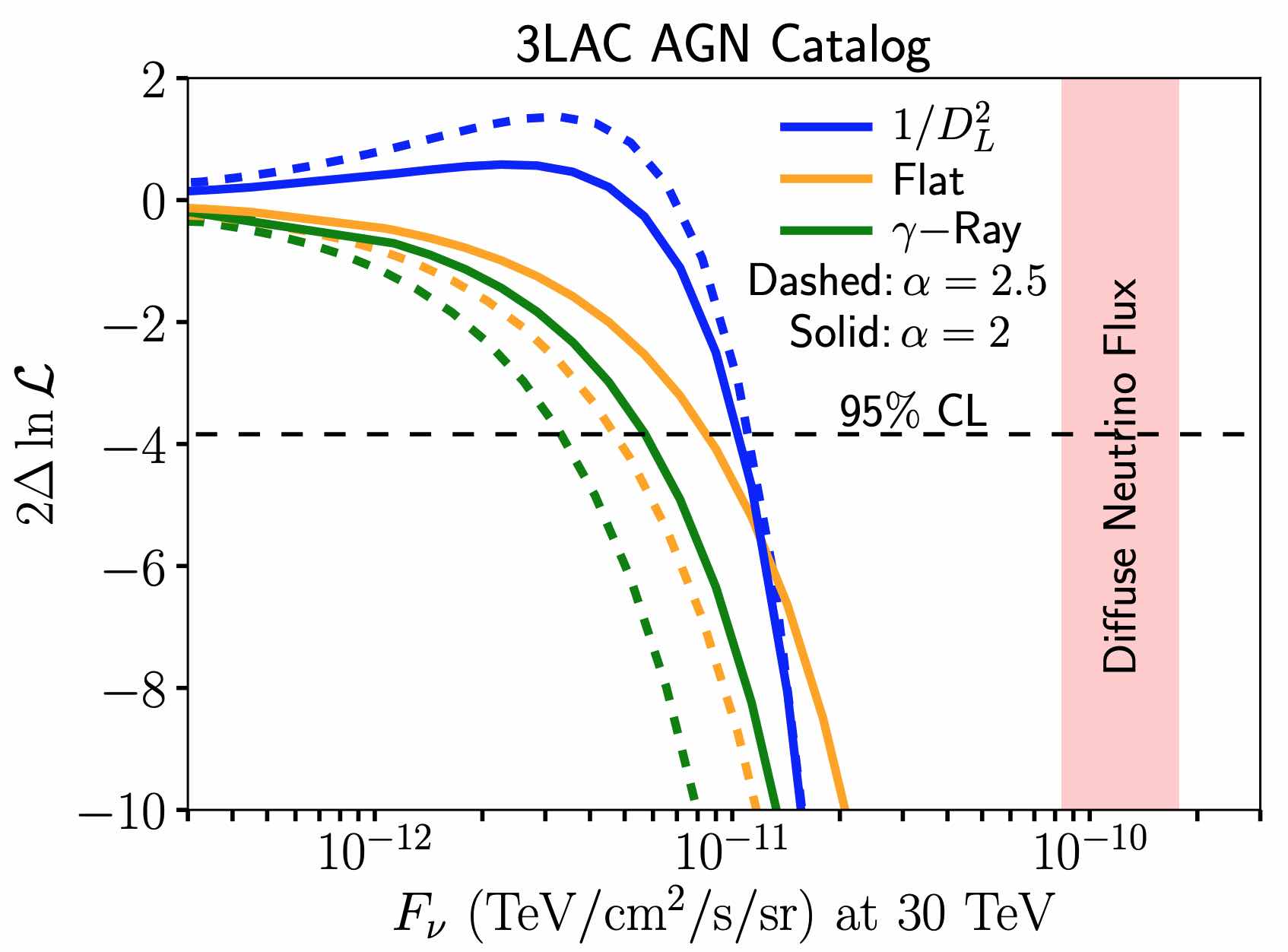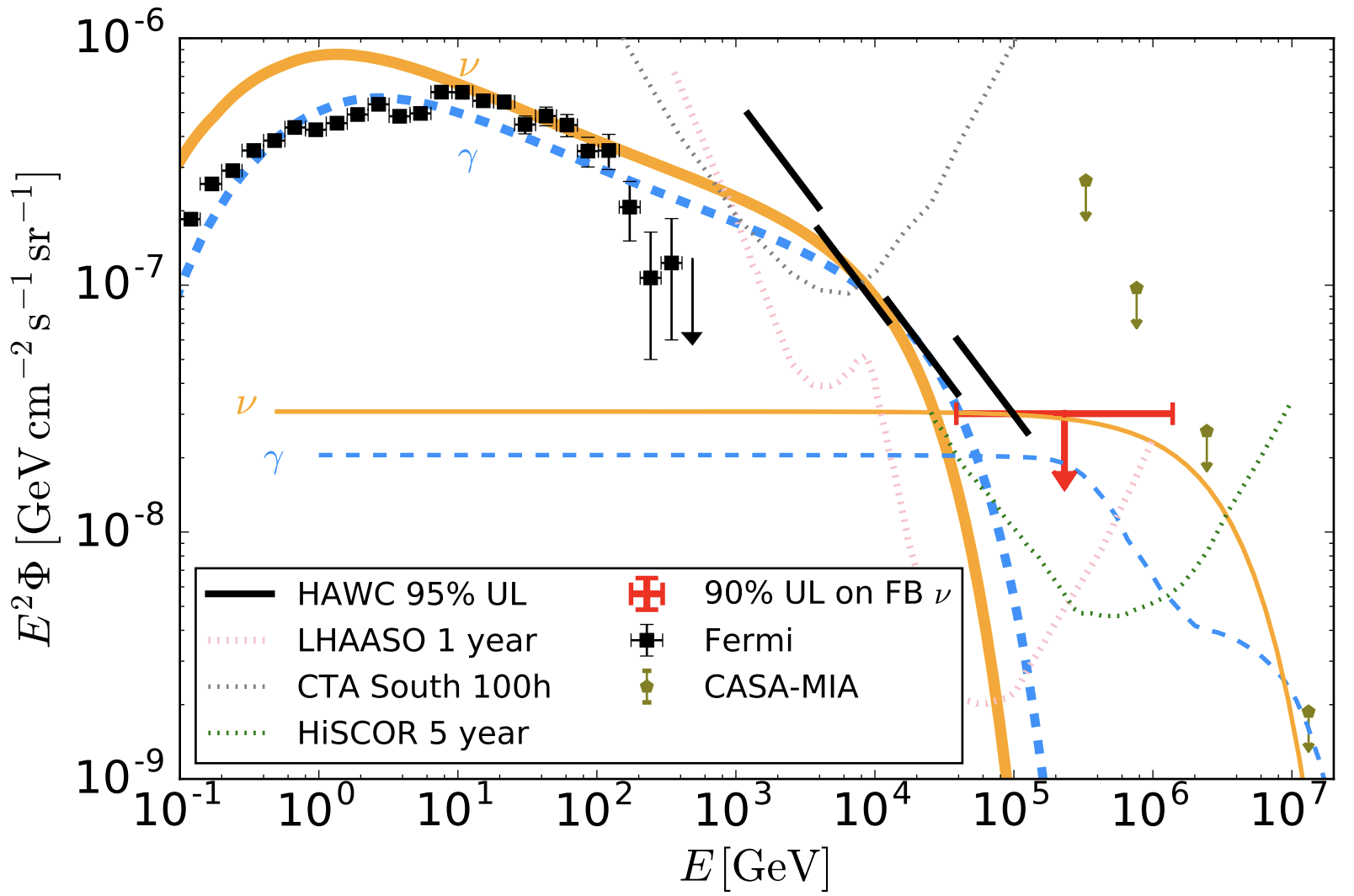
AGN-Driven Models for the Neutrino and Gamma-Ray Flux from NGC 1068
Recent observations by IceCube have found an extremely high neutrino flux from the Seyfert II Galaxy NGC 1068. These models are hard to reconcile with the relatively low gamma-ray flux from this galaxy, unless the neutrinos are produced in a region where the gamma-ray emission is strongly attenuated. However, gamma-ray attenuation produces lower-energy gamma-rays that should be obsrved by future telescopes at MeV energies. We study the parameter space which can simultaneously produce the bright neutrino emission and dim GeV gamma-ray emission, finding that this source must have extremely high magnetic and radiation fields near the central black hole. We forecast that future MeV telescopes will detect bright emission from this galaxy.
Read MoreResearch Topics
- Highlights and Overview
- Dark Matter(61)
- Galactic Center Excess(19)
- Gamma-Ray Searches(15)
- Multiwavelength(8)
- Cosmic-Rays Searches(10)
- Dark Matter Models(18)
- Axion Dark Matter(2)
- Astrophysics(62)
- TeV Halos(18)
- Gamma-Ray Astronomy(24)
- Cosmic-Ray Astronomy(12)
- Radio Astronomy(5)
- Neutrino Astronomy(4)
- Solar Physics(6)
- X-Ray Binaries(7)

